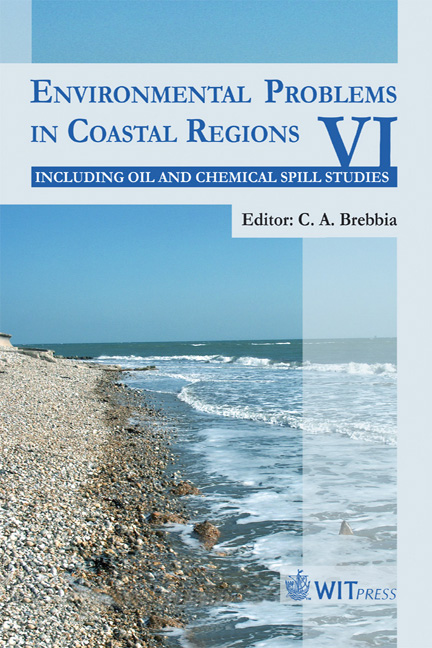Clean Up Of Contaminated Sediments Of The Taranto Harbour By Stabilization/solidification Treatment
Price
Free (open access)
Transaction
Volume
88
Pages
9
Published
2006
Size
487 kb
Paper DOI
10.2495/CENV060111
Copyright
WIT Press
Author(s)
F. Cangialosi, G. Intini, L. Liberti, M. Notarnicola, T. Pastore & F. Tazzoli
Abstract
The most widely used procedure for reducing the contamination effects of marine sediments is the dredging and disposal of material in controlled landfills. This method is becoming impracticable because it is increasingly difficult to find adequate space. This study was carried out to design an effective treatment method for heavy metal contaminated sediments using stabilization/solidification (S/S) technology. In particular, experimental investigation on a laboratory scale has been carried out to highlight the effect of inorganic pollutants (copper, nickel and lead) on physico-chemical properties and the leaching behaviour of cement-based solidified materials. To better understanding the S/S process, both artificially spiked and field samples of Taranto harbour sediments contaminated by heavy metals were treated with different kinds of cement and water/cement/sediment ratios. The results of laboratory tests indicated that sediment to be treated requires an increase of the water/cement ratio, due to its remarkable content of fine fraction. A good immobilization of copper, lead and nickel after only seven days of curing, due to high Ph values (8-9) and the percentage of silica (approx. 60 % in weight) in harbour sediment limiting metal leaching from the solidified matrix was observed. In conclusion the cement based S/S technology seems to be effective in treating marine sediments contaminated by heavy metals and is promising for large scale application. Keywords: contaminated sediments, stabilization/solidification, heavy metals, leaching tests.
Keywords
contaminated sediments, stabilization/solidification, heavy metals, leaching tests.





